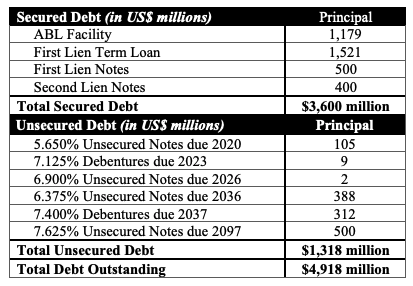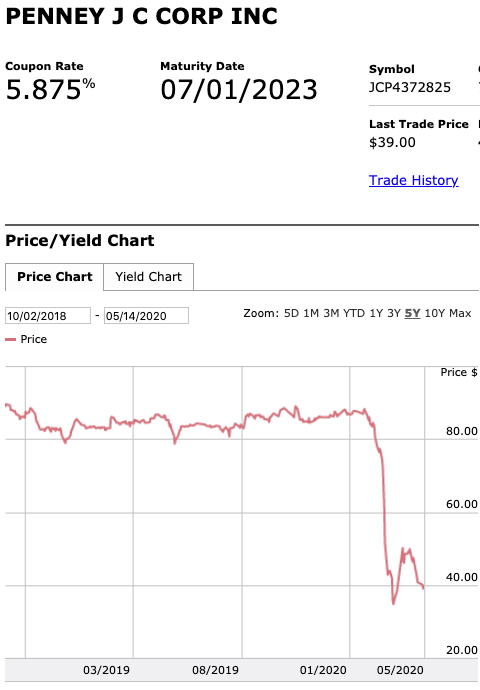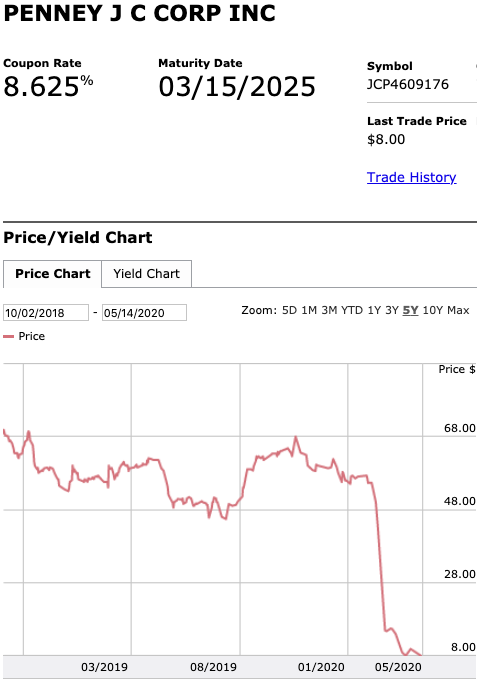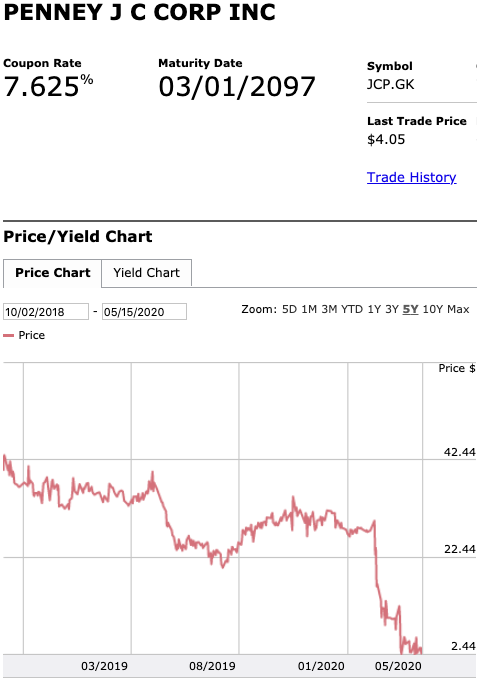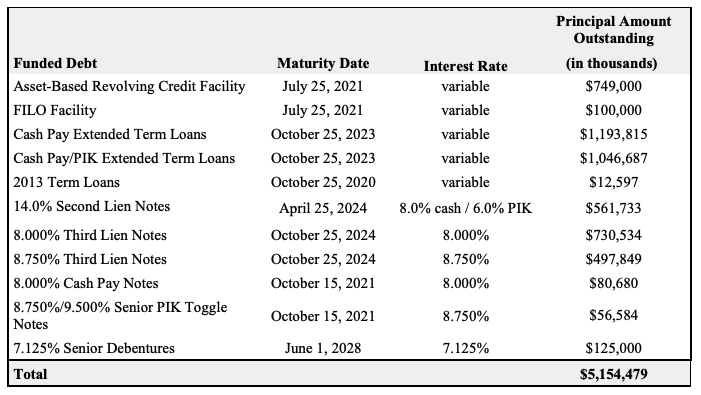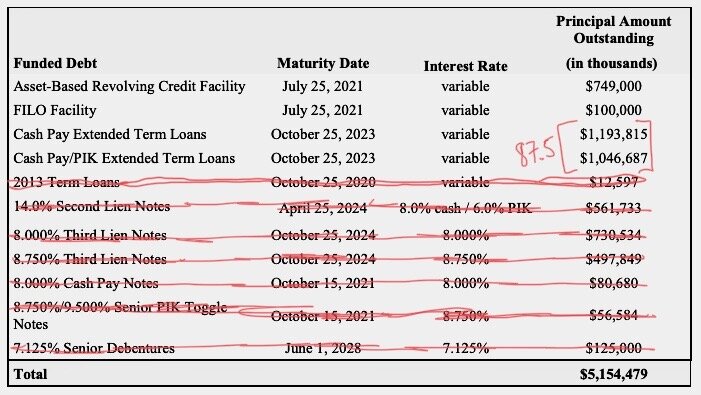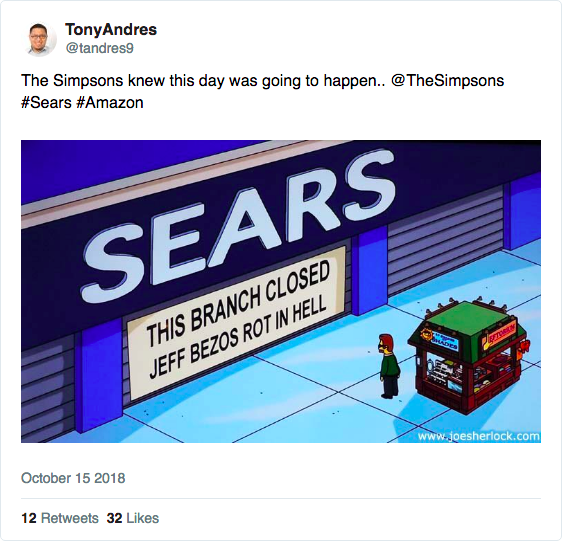💪 New Chapter 11 Bankruptcy Filing - 24 Hour Fitness Inc. 💪
24 Hour Fitness Inc.
June 15, 2020
California-based 24 Hour Fitness Inc. (along with ten affiliates, the “debtors”) filed for chapter 11 bankruptcy in the District of Delaware after it became apparent that it’s hard to sustain a fitness business when, as a practical matter, you’re really 0 Hour Fitness Inc. When you have 3.4mm customers across 445 (leased) locations across the United States, it’s awfully hard for a business that typically does $1.5b in revenue and $191 in adjusted EBITDA to make money when a pandemic rips through the nation and shuts down business entirely. This, ladies and gentlemen, like the few airlines who have filed for bankruptcy to date, is as pure-play a COVID-19 story as they come these days.
Now, that’s to not to suggest that everything was copacetic prior to the quarantine. The business had some pimples on it. The debtors’ CRO cites the selling/operating model’s negative impact on financial performance. But the biggest and scariest pimples are the debtors’ balance sheet and lease portfolio. The former includes $1.4b of funded debt; the latter, 445 locations leased across the country, of which 135 have already been deemed unnecessary and are the subject of a first day executory contract rejection motion (PETITION Note: the debtors denote this as “a first wave.”). When revenues stop coming into the coffers, these tremendous amounts become quite an overhang and a liquidity drain.
The filing, among other things, helps solve for the liquidity issue. The debtors have obtained a commitment for a $250mm new-money senior secured DIP facility from an ad hoc group of lenders. While there is no restructuring support agreement in place here, the ad hoc group is comprised of 63.3% of the aggregate principal amount outstanding under the prepetition credit facility and approximately 73.9% of the face amount of the $500mm in senior unsecured notes. In other words, there’s a solid amount of support here but not enough yet to command the senior class of debt.
Luckily, the debtors gave themselves a form of pre-DIP. Wait. Huh? What are we referring to?
…the Debtors were obliged to close all of their fitness clubs nationwide on March 16, 2020, in response to this national emergency. As a result, the Debtors were no longer able to generate new sources of revenue (by winning new members) and, on or about April 15, 2020, the Debtors suspended billing on account of monthly membership dues.fn
In the footnote, the debtors note:
To date, litigation has been commenced in connection with the Debtors’ monthly billing on a post-March 16 basis, notwithstanding, among other things, the Debtors’ rights under their various membership agreements. The Debtors reserve all rights, claims, and defenses in this regard.
Uh, apparently, 0 Hour Fitness Inc. = 30 Days of Payment Inc. We’ll see whether this short-term liquidity grab created long term customer retention issues.*
Moreover, the fact that they apparently laid off thousands of employees via conference call probably won’t amount to a whole lot of goodwill. Just sayin’.
Now it’s wait and see. The debtors have reopened approximately 20 locations in Texas and hope to have the majority of their other non-rejected clubs open by the end of June. We’ll see if the uptick in COVID cases in certain states throws a wrench in that plan. To combat any COVID-related perception risk, the debtors are instituting some new measures:
…the Debtors have taken an innovative approach to the reopening of their clubs, instituting market-leading strategies to keep their members and employees safe, including an app-based reservation system to ensure that their clubs remain in compliance with applicable social distancing guidelines, a touchless check-in system to limit members’ and employees’ contact with surfaces, and cleaning schedules that ensure that entire clubs are sanitized every hour. (emphasis added)
Gosh. We see sh*t like this — the airlines are also making similar statements about newly implemented cleanliness standards — and it really makes us wonder: what the bloody hell were these cesspools doing pre-COVID?!?!? Clearly not enough.
And, yet, otherwise, we have some sympathy for these businesses. This is a brand new paradigm. The debtors indicate that they’re implementing a reservation-based system where people are locked into an hour-max workout after which the gym will be closed for 30 minutes for a “deep clean.” That is not exactly a seamless and frictionless user experience. Moreover, what kind of chemicals are going to be dumped all over the facility every 60 minutes? These are tough issues.
As far as social distancing:
…the Debtors are utilizing space in their clubs in creative ways in order to continue to offer members a range of amenities and services. For example, the Debtors are utilizing their basketball courts to hold group exercise classes, including by relocating stationary bike equipment to continue to offer indoor cycling classes, so that members and equipment can be properly spaced to comply with social distancing guidelines.
Source: First Day Declaration
No offense but does THIS really worth going to the gym for? You can use apps for a fraction of the cost and do this at home…mask-less.
So what now?
The DIP financing will buy the debtors some time to evaluate new trends. Will those people who paid for a month when the gym was closed come back? Will the news about employee treatment effect the “brand”? Will all of those people who bought home gyms or learned to run need to go to a gym? The re-opening notwithstanding, all of these questions will directly impact valuation. Indeed, how do you value this business with so many massive question marks? Well, luckily, we have the debt to get a sense of what that answer might be. And considering that, at the time of this writing, the term loan is bid in the high 20s and the unsecured notes are bid around 3 — that’s right, 3 — it’s pretty clear who is getting (generally) wiped out in this scenario and where the market thinks the value breaks.
*Honestly, this was a dirty move but from the debtors’ perspective, it also totally makes sense.
Jurisdiction: D. of Delaware (Judge Owens)
Capital Structure: $95.2mm ‘23 RCF, $835.1mm ‘25 Term Loan, $500mm 8% ‘22 unsecured notes (Wells Fargo Bank NA)
Professionals:
Legal: Weil Gotshal & Manges LLP (Ray Schrock, Ryan Preston Dahl, Kevin Bostel, Kyle Satterfield, Ramsey Scofield, Jackson Que Alldredge, Jacob Mezei, Alexander Cohen, Sarah Schnorrenberg) & Pachulski Stang Ziehl & Jones LLP (Laura Davis Jones, Timothy Cairns, Peter Keane)
Directors: Marc Beilinson, Stephen Hare, Roland Smith
Financial Advisor/CRO: FTI Consulting Inc. (Daniel Hugo)
Investment Banker: Lazard Freres & Co. LLC (Tyler Cowan)
Real Estate Advisor: Hilco Real Estate LLC
Claims Agent: Prime Clerk LLC (*click on the link above for free docket access)
Other Parties in Interest:
Ad Hoc Group
Legal: O’Melveny & Myers LLP (John Rapisardi, Adam Rogoff, Daniel Shamah, Diana Perez, Adam Haberkorn) & Richards Layton & Finger PA (Mark Collins, Michael Merchant, David Queroli)
Prepetition Agent: Morgan Stanley Senior Funding Inc.
Legal: Latham & Watkins LLP (Alfred Xue)
DIP Agent: Wilmington Trust
Legal: Covington & Burling (Ronald Hewitt)
Senior Notes Indenture Trustee: Wells Fargo Bank NA
Legal: Reed Smith LLP (Eric Schaffer, Luke Sizemore, Mark Eckard)
Large equityholders: AEA, Fitness Capital Partners LP, 2411967 Ontario Limited




